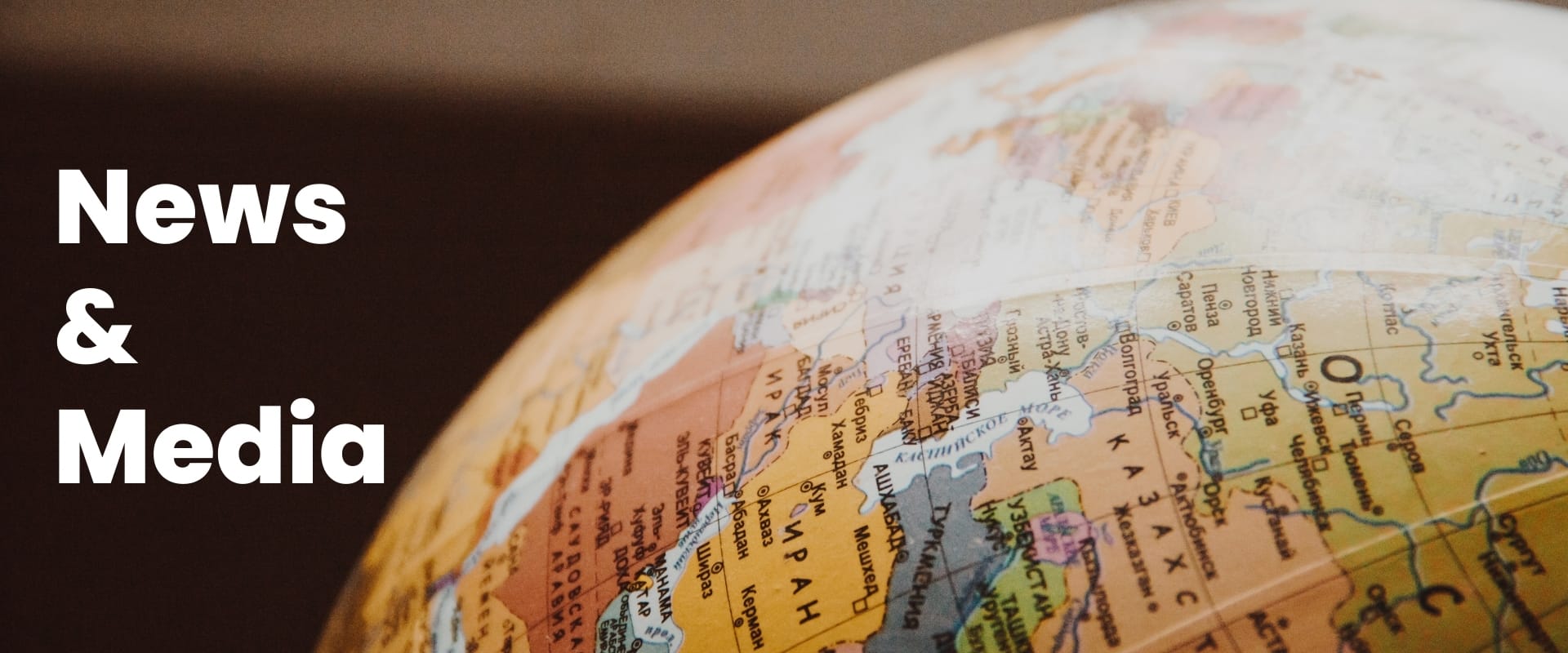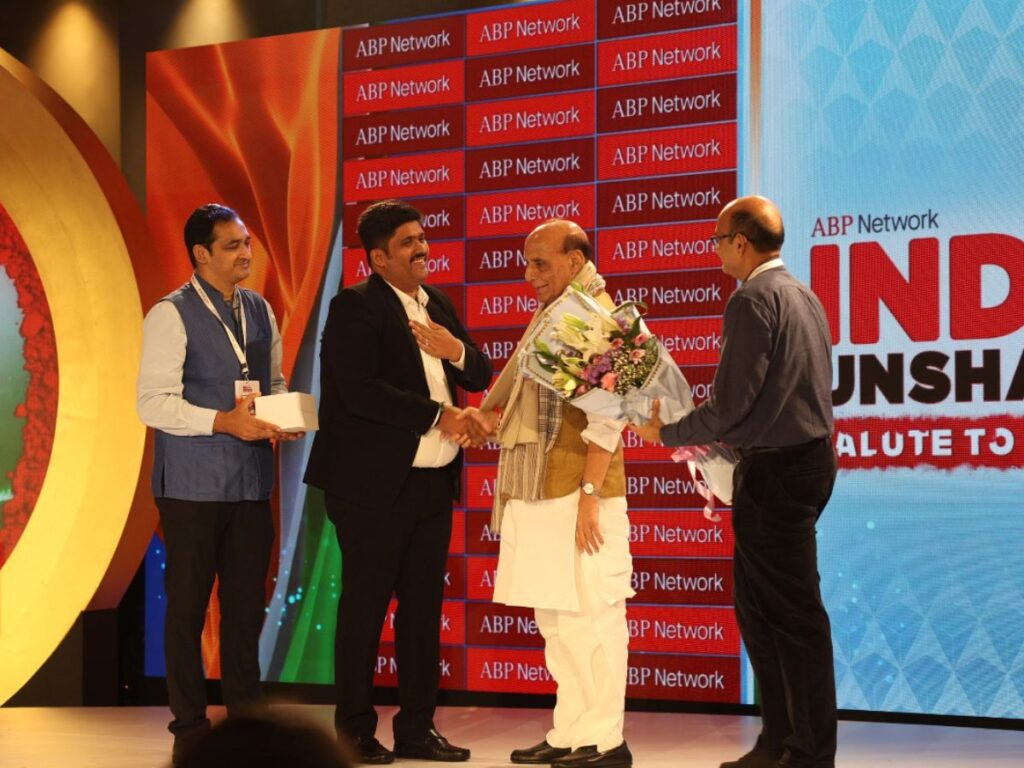Climate change, forests, jobs or the future of your city, you will hear a lot about the UN Climate Change Conference 2025 in the coming months. From 10–21 November 2025, world leaders, scientists, activists and businesses will gather in Belém, Brazil, for Cop -30, the 30th big global climate meeting under the United Nations climate system. This blog explains the full story in simple language so you can clearly understand what Cop -30 is, why it matters, and how it connects to your own life.
What is the UN Climate Change Conference 2025?
The UN Climate Change Conference 2025 is the yearly meeting of all countries that are part of the United Nations Framework Convention on Climate Change (UNFCCC). At this meeting, governments check how much progress the world is making on cutting greenhouse gas emissions, protecting forests and helping people adapt to climate impacts. The same event is also called Cop -30 because it is the 30th “Conference of the Parties” to the climate convention.
Today, 198 parties – 197 countries plus the European Union – are members of the UNFCCC, so the UN Climate Change Conference 2025 is almost like a world parliament on climate. Every party has a seat at the table, from big economies like India, China, the United States and the European Union to vulnerable small island states and least-developed countries. At Cop -30 in Belém, these countries will try to agree on stronger targets, more finance and clear rules to keep the Paris climate goals alive.
How did climate COPs begin? A short history
To understand the UN Climate Change Conference 2025, we have to go back to the early 1990s. In 1992, at the Earth Summit in Rio de Janeiro, countries agreed on the UNFCCC. The basic idea was simple: stabilize greenhouse gas concentrations at a level that avoids “dangerous” human interference with the climate system. This treaty created the system that now leads to Cop -30 in 2025.
The first Conference of the Parties, COP1, took place in Berlin in 1995. Since then, the COP has met almost every year in different cities:
COP3 in Kyoto, Japan (1997) produced the Kyoto Protocol.
COP13 in Bali (2007) launched a roadmap for a broader global deal.
COP15 in Copenhagen (2009) showed how difficult a fair agreement can be.
COP21 in Paris (2015) finally gave the world a new, more flexible climate treaty.
Later COPs, such as Glasgow, Sharm el-Sheikh and Dubai, focused on detailed rules, finance and reviewing progress.
All of these meetings built the foundation for the UN Climate Change Conference 2025 and for Cop -30 in Belém. Each one pushed the world a little further from vague promises towards real targets, rules and accountability.
Kyoto Protocol: the first big climate deal
One of the most important chapters in this history is the Kyoto Protocol, agreed at COP3 in Kyoto in 1997. The Kyoto Protocol was the first treaty that set legally binding emission reduction targets for developed countries. It asked rich, industrialized nations to cut their greenhouse gas emissions compared to 1990 levels in two commitment periods that ran up to 2020.
Under Kyoto, developing countries did not have binding targets, but they could host climate projects and attract green investment. This idea led directly to carbon trading, which is still central to debates at the UN Climate Change Conference 2025 and at Cop -30.
What is carbon trading in simple words?
Carbon trading is a way to put a price on pollution and create financial rewards for cutting emissions. Under the Kyoto Protocol, three main market mechanisms were created:
Emissions trading between countries with targets.
Joint Implementation projects between developed countries.
The Clean Development Mechanism, where rich countries invested in clean projects in developing countries and received “carbon credits” in return.
In simple language, carbon trading means this: if it is cheaper to reduce emissions in one place than another, then money should flow to that cheaper, cleaner option. A company or country that reduces more pollution than required can sell extra “carbon credits” to another who finds it harder or more expensive to cut emissions. This allows the overall global target to be met at lower cost.
Over time, many carbon markets have appeared – from regional systems like the European Union Emissions Trading System to voluntary markets where companies buy credits to offset some of their emissions. Today, countries are negotiating new carbon market rules under Article 6 of the Paris Agreement, and Cop -30 is expected to be an important moment for finalising fair, transparent rules so that markets really help the climate instead of just creating paper credits. This is why carbon trading will again be in the spotlight at the UN Climate Change Conference 2025.
What was the Paris Summit?
If Kyoto was the first step, the Paris Summit was the turning point. At COP21 in 2015, held in Paris, countries adopted the Paris Agreement. This is the heart of today’s climate action and a central background for the UN Climate Change Conference 2025.
The Paris Summit changed the system in three big ways:
First, it set a long-term temperature goal: keep global warming well below 2°C compared to pre-industrial levels and try hard to limit warming to 1.5°C. Science shows that crossing 1.5°C makes heatwaves, floods, droughts and sea-level rise much more dangerous.
Second, it moved from fixed targets for only rich countries to a system where every country submits its own climate plan, called a Nationally Determined Contribution, or NDC. These NDCs explain how each country will cut emissions and adapt to climate impacts in line with its capacity.
Third, it created a “ratchet mechanism”. Every five years, countries are expected to come back with stronger NDCs, based on new science and technology. This rolling cycle is meant to gradually move the world closer to the 1.5°C path.
The UN Climate Change Conference 2025 in Belém is exactly one of those key moments when countries are expected to present much stronger NDCs for the period up to 2035. That is why Cop -30 is seen as a make-or-break summit for the Paris goals.
Why are 198 parties so important?
Today the UNFCCC has 198 parties, including all UN member states, the European Union, and observer states like the Holy See and the State of Palestine. This almost universal membership gives the UN Climate Change Conference 2025 unique legitimacy. Climate change is a global problem, so the response must also be global. When decisions are made at Cop -30, they are based on negotiations that include almost every government in the world, from the largest emitters to the smallest island nations threatened by rising seas.
Of course, not all parties have the same power. Some blocks, like the G77 group of developing countries, the Least Developed Countries group, or alliances of high-ambition states, play key roles in pushing for fair finance, strong rules and climate justice. But the fact that 198 parties sit in the same process is a strong symbol that climate action is a shared responsibility and a key reason why the UN Climate Change Conference 2025 matters.
Why is Cop -30 in Belém, Brazil, so special?
The UN Climate Change Conference 2025 is unique because it will be held in Belém, a city in the Brazilian Amazon. For the first time, a COP is happening right in the heart of one of the world’s most important tropical forests. The Amazon stores huge amounts of carbon, supports rainfall patterns across South America and even other regions, and is home to millions of people, including many Indigenous communities.
Hosting Cop -30 in Belém sends a clear message: protecting forests and respecting forest peoples is central to solving climate change. The Brazilian government is presenting itself as a defender of the Amazon and a leader in climate action. At the same time, the location also highlights tough realities – deforestation, fires, land conflicts and inequality. This mix of hope and challenge will shape the tone of the UN Climate Change Conference 2025.
Key themes expected at Cop -30
While negotiations are always complex, several big themes are expected to dominate Cop -30 and the UN Climate Change Conference 2025:
1. Stronger climate plans (NDCs)
By 2025, countries are expected to submit new or updated NDCs that run to 2035. At Cop -30, the world will judge whether these plans are finally aligned with the 1.5°C limit. Many experts say that current pledges are still too weak and that the UN Climate Change Conference 2025 must push for deep cuts in fossil fuel use this decade.
2. Climate finance and a new global goal
Developing countries need huge amounts of money to shift to clean energy, build climate-resilient infrastructure and deal with climate damages. Earlier, rich countries promised 100 billion dollars per year in climate finance, but delivery has been slow and trust has suffered. Now countries are negotiating a new global finance goal for after 2025. At Cop -30 in Belém, one of the most sensitive questions will be: who pays how much, and on what terms? The answers that come out of the UN Climate Change Conference 2025 will impact real projects on the ground.
3. Carbon markets and rules under Article 6
As mentioned earlier, carbon trading can be powerful if it is well designed. Under the Paris Agreement, countries are trying to finalise detailed rules so that international carbon markets actually reduce emissions and bring benefits to communities, instead of just allowing cheap offsets. Cop -30 is expected to be a key moment for agreeing on transparency, double-counting rules and strong safeguards for human rights in these markets. Clear rules here will be a major outcome of the UN Climate Change Conference 2025.
4. Loss and damage
Many countries are already facing irreversible losses from climate change – destroyed homes, lost farmland, disappearing cultures. Recent COPs have started building a new “loss and damage” fund to help vulnerable countries deal with these impacts. At the UN Climate Change Conference 2025, negotiators will need to decide how this fund will be filled with real money and how it will reach communities on the front lines. Cop -30 will be judged by many people based on how fair and effective these arrangements are.
5. Forests, oceans and nature
Because Cop -30 is happening in the Amazon region, nature-based solutions will receive extra focus. Leaders and experts will discuss how to stop deforestation, restore degraded lands and protect biodiversity, while also respecting Indigenous rights. Healthy forests, wetlands and oceans act as natural carbon sinks, so their protection is vital to meeting the Paris goals. The UN Climate Change Conference 2025 will try to link climate action with the broader nature and biodiversity agenda.
| COP No. | Year | Country | Subject (Main Focus / Outcome) |
|---|
| COP-1 | 1995 | Germany | Berlin Mandate – future stronger commitments की तैयारी |
| COP-2 | 1996 | Switzerland | Kyoto जैसे binding targets की राजनीतिक सहमति की दिशा |
| COP-3 | 1997 | Japan | Kyoto Protocol – विकसित देशों के लिए कानूनी उत्सर्जन लक्ष्य |
| COP-4 | 1998 | Argentina | Buenos Aires Plan of Action – Kyoto लागू करने की रूपरेखा |
| COP-5 | 1999 | Germany | Kyoto के technical rules पर detailed बातचीत |
| COP-6 | 2000 | Netherlands | Kyoto rules पर असहमति, वार्ता अधूरी रही |
| COP-7 | 2001 | Morocco | Marrakech Accords – Kyoto के implementation rules तय |
| COP-8 | 2002 | India | Delhi Declaration – sustainable development और equity पर ज़ोर |
| COP-9 | 2003 | Italy | Kyoto project mechanisms (जैसे CDM) की operational details |
| COP-10 | 2004 | Argentina | Buenos Aires Programme of Work – adaptation पर ज़्यादा फोकस |
| COP-11 | 2005 | Canada | Montreal Action Plan – Kyoto की पहली commitment period आगे बढ़ाना |
| COP-12 | 2006 | Kenya | Adaptation funding और अफ्रीका की climate vulnerability पर ज़ोर |
| COP-13 | 2007 | Indonesia | Bali Action Plan – post-2012 global climate deal की रोडमैप |
| COP-14 | 2008 | Poland | Copenhagen agreement के लिए negotiating text की तैयारी |
| COP-15 | 2009 | Denmark | Copenhagen Accord – 2°C लक्ष्य, finance pledges पर political deal |
| COP-16 | 2010 | Mexico | Cancun Agreements – mitigation, adaptation, Green Climate Fund |
| COP-17 | 2011 | South Africa | Durban Platform – नया universal climate agreement process शुरू |
| COP-18 | 2012 | Qatar | Doha Amendment – Kyoto Protocol की दूसरी commitment period |
| COP-19 | 2013 | Poland | Warsaw International Mechanism on Loss and Damage स्थापित |
| COP-20 | 2014 | Peru | Lima Call for Climate Action – Paris Agreement के text की नींव |
| COP-21 | 2015 | France | Paris Agreement – 1.5–2°C लक्ष्य, NDC system, global stocktake |
| COP-22 | 2016 | Morocco | Paris rulebook पर काम शुरू, implementation details forward करना |
| COP-23 | 2017 | Germany (Fiji Presidency) | Fiji-led Talanoa Dialogue और ambition बढ़ाने पर फोकस |
| COP-24 | 2018 | Poland | Katowice Climate Package – Paris Agreement rulebook finalise |
| COP-25 | 2019 | Spain (Chile Presidency) | “Chile Madrid Time for Action” – Article 6 talks आगे, पर अधूरे |
| COP-26 | 2021 | United Kingdom | Glasgow Climate Pact – coal phase-down, 1.5°C पर जोर, NDC अपडेट |
| COP-27 | 2022 | Egypt | Sharm el-Sheikh Implementation Plan, Loss and Damage Fund पर सहमति |
| COP-28 | 2023 | United Arab Emirates | Dubai UAE Consensus – पहली Global Stocktake, fossil fuels transition संकेत |
| COP-29 | 2024 | Azerbaijan | New post-2025 climate finance goal पर negotiation (planning role) |
| COP-30 | 2025 | Brazil | Belém Amazon-focused summit – stronger 2035 NDCs और नई finance framework पर फोकस |
What will actually happen inside Cop -30?
During the two weeks of the UN Climate Change Conference 2025, Belém will be divided into different zones. In the “blue zone”, official negotiations take place. Delegates sit in meeting rooms, line-by-line text is discussed and new versions of decisions are drafted every day. Ministers join in the second week to solve the hardest political issues at Cop -30.
Outside the negotiation halls, in the “green zone” and across the city, thousands of people from businesses, cities, universities, NGOs, youth groups and Indigenous organisations will run events, exhibitions and side meetings. For them, Cop -30 is a place to:
Share new technologies and climate solutions.
Announce voluntary climate commitments.
Build networks and partnerships.
Put pressure on governments to be more ambitious.
Media from all over the world will follow every move. When negotiations go well, the UN Climate Change Conference 2025 will be described as a success that keeps 1.5°C alive. When talks stall, headlines may warn of failure, greenwashing or lack of political will. In reality, each COP, including Cop -30, is part of a long process. Progress can be slow, but every step matters.
What does all this mean for ordinary people?
It is easy to think that the UN Climate Change Conference 2025 is only for diplomats and experts. But decisions made at Cop -30 will influence everyday life in many ways:
Energy: Stronger targets mean faster growth of solar, wind and other clean energy, which can create jobs and reduce air pollution.
Transport: Climate policies encourage electric vehicles, better public transport and more walking and cycling infrastructure.
Cities: Urban planning that takes climate risks seriously can reduce flooding, heat stress and health problems.
Agriculture: Climate-smart farming can protect soil, water and farmers’ incomes.
Jobs and skills: New green industries need new skills, from installing solar panels to managing climate risk in banks and insurance.
For students and young professionals, understanding the UN Climate Change Conference 2025 and Cop -30 is not just about exams or news debates. It is about knowing where the world is heading and how you can position your career and your community for a low-carbon, climate-resilient future.
How you can follow and use Cop -30
Even if you never travel to Brazil, you can still follow Cop -30 and use it for learning and action:
Track the main announcements and see how your country’s leaders respond.
Compare your country’s climate promises with those of similar economies.
Use stories from the UN Climate Change Conference 2025 in school projects, presentations, blogs or social media posts.
Join local campaigns, tree-planting drives or clean-energy initiatives that turn big global goals into real changes on the ground.
Latest Information
COP29 and COP30 Presidents present Baku to Belém Roadmap to mobilize US$1.3 trillion in climate financec –
The latest update on the Baku to Belém Roadmap, presented by the COP29 President (Azerbaijan) and COP30 President (Brazil), outlines a strategic blueprint to mobilize at least US$1.3 trillion annually in climate finance for developing countries by 2035. This roadmap is a decade-after-plan to advance the Paris Agreement goals and significantly scale up climate finance.
Key points include:
The Roadmap focuses on five action fronts: replenishing grants and concessional finance, rebalancing fiscal space and debt sustainability, rechanneling transformative private finance, revamping capacity and coordination, and reshaping systems for equitable capital flows.
It emphasizes working together across traditional and innovative financial mechanisms to reach the target.
The COP29 and COP30 presidencies will convene expert groups and dialogue sessions through 2026 to develop concrete financing pathways and guide early implementation.
Developed countries are encouraged to create delivery plans for mobilizing US$300 billion by 2030 as part of the New Collective Quantified Goal (NCQG).
The roadmap highlights the need for improved predictability, collaboration between multilateral climate funds, development banks, and other financial entities.
There are plans for annual reporting, studies on expanding debt-for-climate finance, and efforts to reduce barriers to investment in developing countries.
The roadmap was officially launched at COP30 in Brazil (November 2025), marking a “beginning of the journey” toward the ambitious financial mobilization.
The current climate finance flows of about US$190 billion annually are deemed insufficient, and this roadmap aims to transform the global finance system to meet developing countries’ urgent climate needs.
Overall, COP29 and COP30 leaders express optimism that with concerted global effort, strategic resource deployment, and system overhaul, the US$1.3 trillion annual climate finance goal by 2035 is achievable, offering hope for both environmental sustainability and economic development worldwide
Conclusion: Why Cop -30 matters now
The UN Climate Change Conference 2025 is not just a political event; it is a signal for businesses, cities and citizens about the kind of future we are building together.
The UN Climate Change Conference 2025 will influence policies on energy, transport, housing and jobs for years to come.
The UN Climate Change Conference 2025 also acts as a mirror, showing whether governments are truly serious about climate action or still delaying tough choices.
Climate change is no longer a distant problem. Heatwaves, floods, storms and changing monsoon patterns are already affecting health, food security and the economy. The UN Climate Change Conference 2025 in Belém is happening at a time when science is very clear: this decade is the make-or-break period for keeping the Paris temperature goals within reach.
Cop -30 brings together 198 parties, thousands of experts and a huge range of ideas about how to cut emissions, protect nature and support vulnerable people. It will not solve everything in two weeks. But it can send strong signals to governments, markets and societies about the speed and direction of change.
By understanding the history from Kyoto to Paris, the role of carbon trading and the meaning of the Paris Summit, you can see Cop -30 not as a confusing diplomatic show, but as one more essential step in a long global journey. The choices made at the UN Climate Change Conference 2025 will shape the climate, the economy and the opportunities available to this generation and the next. That is why this conference deserves your attention, your questions and, wherever possible, your active participation in climate action at home.
About Doon Defence Dreamers
Doon Defence Dreamers (DDD) is a Dehradun-based defence academy that prepares students for NDA, CDS, AFCAT, RIMC, RMS and SSB interviews through a structured, outcome-focused system combining classes, PT, GTO practice, hostel support and regular mock tests. With 710+ NDA written qualifiers, 35 SSB selections in a single month and 6 female cadets recommended, it is widely seen as one of the best NDA coaching in Dehradun and best CDS coaching institutes in Dehradun. Through its academic wing Dreamers Edu Hub and tie-ups with Sainik Schools like Nagrota and Chandrapur, DDD builds a strong school-to-armed forces pipeline and promotes an Atmanirbhar, mission-driven training culture for future officers.





























